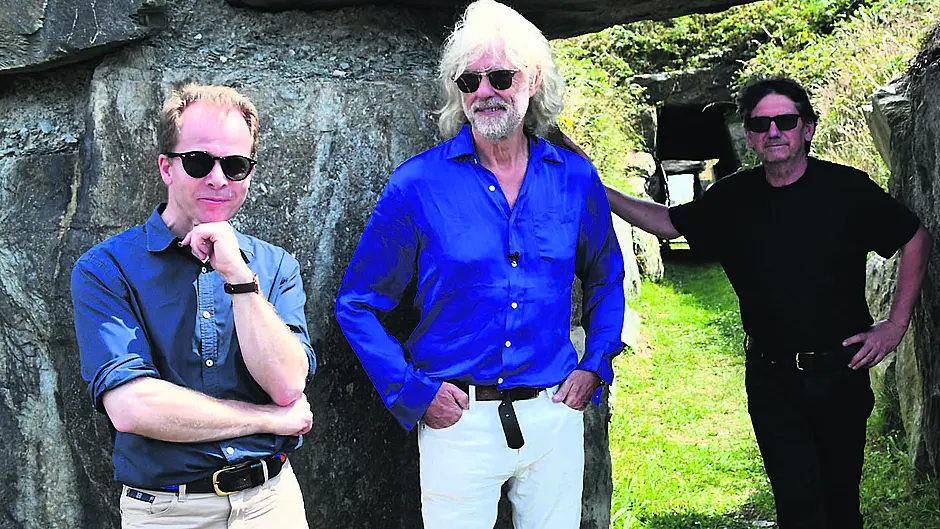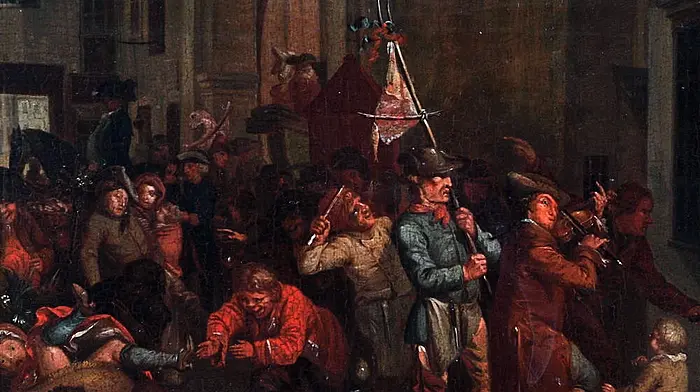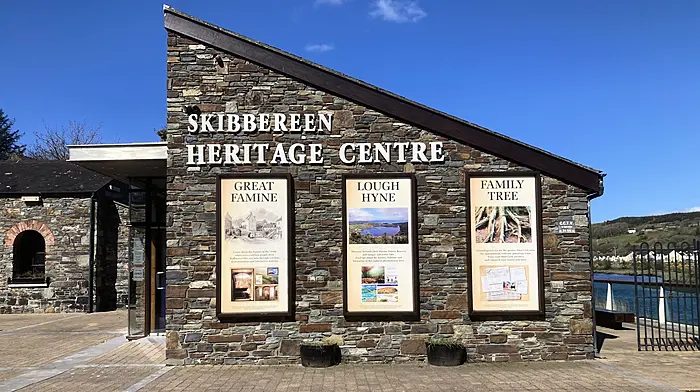ON his second famine-related visit to Skibbereen, Bob Geldof this week praised efforts being made to ‘remember by naming’ the people who died at South Reen.
The entire community of 200 people was decimated as a result of the famine. It was one of the first and worst areas to be affected and it took with it the people, their language and their culture.
Such was the level of suffering at South Reen that Nicholas Marshal Cummins, a justice of the peace, wrote to The London Times on Christmas Eve in 1846, and described in graphic detail the sight of dead and dying people in their homes on the headland.
In the same way that Live Aid in 1985 mobilised a huge international response to famine in Somalia, Bob Geldof said that within two weeks of the letter being printed the young queen, a woman, Victoria, started the British Relief Association with £20,000.
The reading of the letter by Bob in a sky garden at Reen South on Tuesday was recorded and will be screened as part of the West Cork History Festival’s ‘Black ‘47’ programme on Saturday August 6th.
Bob first visited South Reen – which is owned by the internationally-acclaimed artist John Kelly and his wife Christina Todesco Kelly – in 2018, after he came to Skibbereen to view a major famine commemoration exhibition Coming Home: Art and the Great Hunger at the Uillinn arts centre.
He described Reen saying, ‘It is not just a place of great physical beauty but of past horror too.’ But side by side with its ‘sense of absence’ he said there is now ‘a great sense of presence.’
‘Maybe,’ he added, ‘there are no ghosts knocking at John’s brain or on the farmhouse door saying, “We were here. This is where we died in utter degradation and horror”.’ But maybe, he surmised, the work of John Kelly is making that presence appear.
‘The artwork that John has made over the course of years seems to be uniting now in some sort of bizarre common purpose in memory of the small houses that dotted this farm, of the hundreds of people who died here,’ he said.
The campaigner spoke of ‘getting the same sensation here as when I visit those more studied pieces of art that are the memorials to the holocaust.’
Although the visit was marked by a large degree of solemnity there was lots of sunshine and humour too.
Invited guests walked the land with Simon Kingston of the West Cork History Festival and Bob to view all aspects of the project on the 13-acre holding including John’s famous ‘Cow in a Tree’ work of art on the headland.
People poured over four huge tablets set into the ground, each of which recalls different aspects of Ireland’s Great Famine.
The irreverent musician marvelled at the folly of John’s version of the Tate Glass Cathedral, a mini version of London’s Tate Modern Museum. Having professed himself a fan of follies he shared with The Southern Star a detailed description of the garden folly he one day hopes to create, a garden of good and evil.
John’s Tate has a darker purpose too. It houses the ancient and gigantic soup pot that was once used to feed the starving population of South Reen during the famine.
The work of John Kelly and his family is ongoing.
There are a number of new projects in the offing, but it is his plan to remember the names of the people – those who once populated the headland – to etch their name in stone, and to place that stone in the ground, that may yet honour their memory most.
‘These people are coming back,’ is how Bob described it. ‘They are not forgotten. Their presence becomes more and more real.’
The project when completed will, according to Bob, be ‘a great work of art’ because it will do what art does best – ‘it enables humanity.’







